I have a list of rectangles stored as points. Currently, the data looks something like this:
boxes = [{'p1': (0,0), 'p2': (100,20)},
{'p1': (5,5), 'p2': (15,15)},
{'p1': (20,5), 'p2': (30,15)},
{'p1': (35,5), 'p2': (45,15)},
{'p1': (70,5), 'p2': (80,15)}]
I also have a basic function that tests if a rectangle is contained within another:
def isChild(b1,b2):
return (b1 != b2 and
(b1['p2'][0]-b1['p1'][0] * b1['p2'][1]-b1['p1'][1]) > (b2['p2'][0]-b2['p1'][0] * b2['p2'][1]-b2['p1'][1]) and
b1['p1'][0] < b2['p2'][0] and
b1['p2'][0] > b2['p1'][0] and
b1['p1'][1] < b2['p2'][1] and
b1['p2'][1] > b2['p1'][1])
I'd like to wind up with a set of rectangles and their children, but I'm not sure how I should store them. I'm thinking something like this:
[{'p1': (0,0),
'p2': (100,20),
'children': [{'p1': (5,5), 'p2': (15,15)},
{'p1': (20,5), 'p2': (30,15)},
{'p1': (35,5), 'p2': (45,15)},
{'p1': (70,5), 'p2': (80,15)}]}]
The context of this is that the boxes represent elements on a web page. The data structure is meant to generate the basic markup, so the structure above would wind up being something like this:
<div>
<div></div>
<div></div>
<div></div>
<div></div>
</div>
- Are the source/goal data structures a good fit for this? If not, what is?
- How can I get from the source to the goal?
- A friend suggested using r-trees. Would that make sense here?
